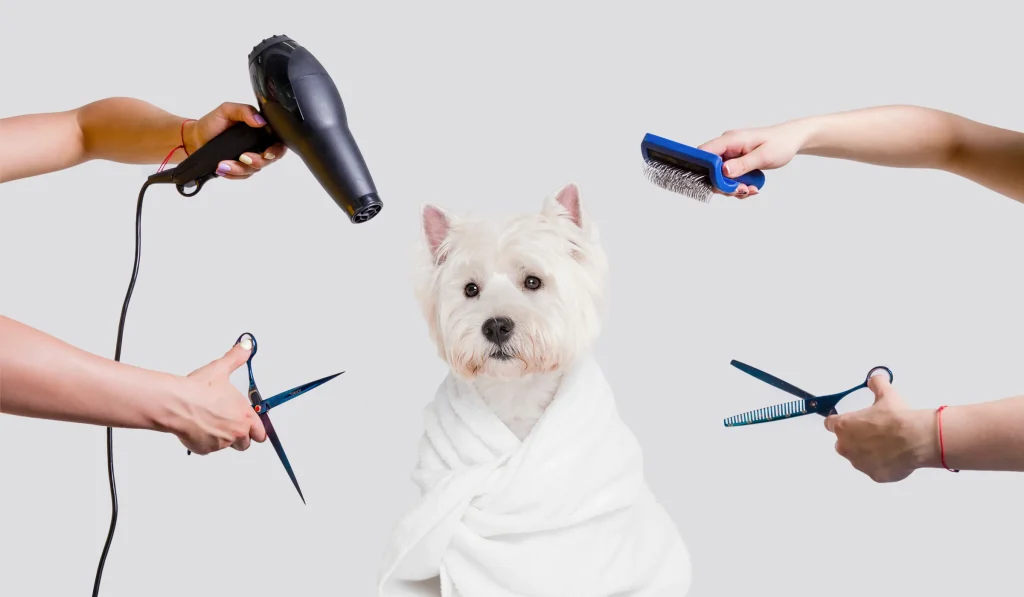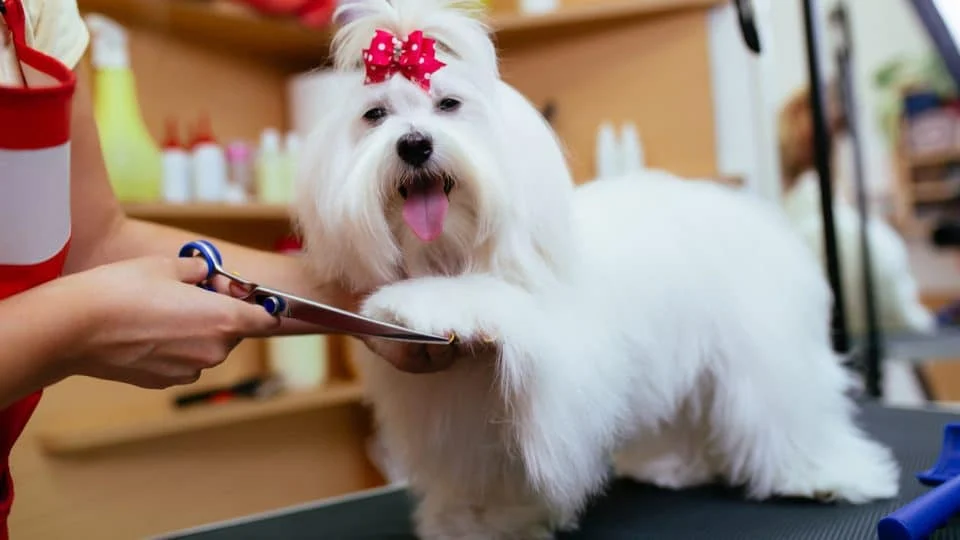
Keeping your pet clean, comfortable, and healthy is one of the most important parts of being a responsible pet owner. Regular grooming not only makes your pet look good but also helps maintain their overall health and happiness. Whether you have a playful dog, a curious cat, or another furry friend, you can easily groom them at home with the right tools and techniques. Here are some essential pet grooming tips at home to make the process smooth and enjoyable for both you and your pet.
1. Gather the Right Grooming Tools

Before you start, make sure you have the proper grooming tools for your pet’s needs. Common essentials include:
- Brush or comb: Choose one suitable for your pet’s coat type. For example, slicker brushes are great for long-haired dogs, while bristle brushes work well for short-haired pets.
- Pet shampoo and conditioner: Use products specially formulated for animals. Human shampoos can be too harsh for their skin and coat.
- Nail clippers or grinder: Keep your pet’s nails trimmed to prevent discomfort or injury.
- Ear cleaner and cotton balls: To safely clean your pet’s ears and prevent infections.
- Towels and blow dryer: For drying after a bath, especially for long or thick coats.
Having everything ready before you start makes grooming easier and keeps your pet relaxed throughout the process.
2. Brushing Regularly
Brushing is one of the simplest yet most important grooming tasks. It removes loose fur, prevents tangles, and stimulates healthy skin and coat. The frequency depends on your pet’s coat type:
- Short-haired pets: Once a week is usually enough.
- Medium to long-haired pets: Brush several times a week to avoid matting.
Always brush gently in the direction of hair growth. For cats, brushing also helps reduce hairballs. If you notice mats or tangles, use a detangling spray or a special mat remover comb to avoid pulling on the skin.
3. Bathing the Right Way
Bathing keeps your pet’s coat clean and odor-free, but too frequent baths can strip away natural oils and cause dryness. As a general rule:
- Dogs: Bathe every 4–6 weeks, or as needed if they get dirty.
- Cats: Most cats groom themselves and rarely need baths unless they get into something sticky or smelly.
When bathing, use lukewarm water and a pet-safe shampoo. Wet your pet thoroughly, apply shampoo, and lather gently. Avoid the eyes, ears, and mouth. Rinse well to remove all soap residue, as leftover shampoo can cause irritation. Towel-dry your pet afterward and use a blow dryer on a low, cool setting if necessary.
4. Nail Trimming

Long nails can cause pain and even affect your pet’s posture. Trim your pet’s nails regularly—usually once a month. Use a pet nail clipper or grinder designed for their size. Be careful not to cut too close to the “quick,” which is the pink area inside the nail containing blood vessels and nerves. If your pet’s nails are dark, trim small bits at a time to avoid cutting too deep.
If you’re nervous about nail trimming, try doing one paw at a time and reward your pet afterward with treats and praise. Over time, they’ll get used to the routine.
5. Cleaning Ears and Eyes
Check your pet’s ears weekly for dirt, wax, or bad odors. Use a vet-approved ear cleaning solution and gently wipe with a cotton ball—never insert anything deep into the ear canal. Clean eyes with a soft, damp cloth to remove discharge or tear stains. If you notice redness, excessive discharge, or bad smell, consult your veterinarian.
6. Dental Care
Dental hygiene is often overlooked but is essential for your pet’s health. Brush your pet’s teeth at least a few times a week using a soft-bristled toothbrush and pet-safe toothpaste. Never use human toothpaste, as it can be toxic to animals. Dental chews and toys can also help keep teeth clean and gums healthy.
7. Make Grooming a Positive Experience

Grooming can be stressful for pets, especially if they’re not used to it. Start slowly and keep sessions short. Offer treats, praise, and affection during and after grooming to create positive associations. Be patient—over time, your pet will learn to relax and enjoy the process.
8. Check for Skin and Health Issues
Grooming time is also a great opportunity to inspect your pet for signs of health problems. Look for:
- Bald spots or excessive shedding
- Redness, rashes, or bumps
- Fleas or ticks
- Ear discharge or foul smell
- Unusual lumps
If you notice anything unusual, schedule a vet appointment promptly. Early detection can prevent serious health issues.
Conclusion
Grooming your pet at home doesn’t have to be complicated or time-consuming. With the right tools, techniques, and a little patience, you can keep your furry friend clean, healthy, and happy. Regular grooming strengthens the bond between you and your pet, reduces stress, and allows you to monitor their overall well-being. Start incorporating these pet grooming tips at home into your routine, and both you and your pet will benefit from the love and care you share.
